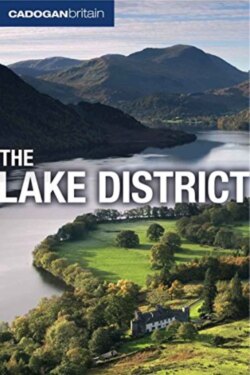Читать книгу Britain: The Lake District - Vivienne Crow - Страница 5
На сайте Литреса книга снята с продажи.
INTRODUCING THE LAKE DISTRICT 01
ОглавлениеCatbells ridge
Rowing boats on Ullswater
For hundreds of years, the Lake District has been an inspiration for writers and artists, moved by its tremendous views and its ever-changing patterns of light; today it inspires many hundreds of thousands of tourists who come seeking tranquillity and the great outdoors. Tucked away in the far northwest corner of England, hugging the Scottish border, this relatively remote spot contains some of the most spectacular scenery in the whole of the British Isles. Carved by glaciers that once covered this region in immense sheets of ice, it is a landscape of deep, dark lakes and glittering, mirror-like tarns crouching at the foot of small but perfectly-formed craggy mountains where red deer roam. Tumultuous waterfalls and fast-flowing becks come crashing down through the ancient woods that cloak the valley sides. Here, an assortment of wildlife live, including some of England’s last red squirrels as well as rare plants and butterflies.
Beyond the Lake District itself, which is England’s largest National Park, Cumbria is home to a huge variety of landscapes, including the lonely moorlands of the North Pennines, the rolling hills of the Howgills, the idyllic Eden Valley, the Solway Plain and a stretch of lovely coast.
For anyone who loves walking, kayaking, mountain-biking, climbing, paragliding – anything to do with the great outdoors – this is heaven on Earth. There are paths and trails everywhere, and a huge number of guides, instructors and hire companies are available to help visitors get the most out of their trip.
Yet this isn’t an entirely natural landscape; since the ice sheets departed, it has been moulded by man – mining, water mills, cottage industries and farming have all left their mark. The Romans were here, as were the ‘beaker’ people, the Celts, the Norsemen and, of course, the Anglo-Saxons, all adding to a colourful historical tapestry, the remains of which are scattered throughout the county. Enigmatic stone circles and henges from prehistoric times brush shoulders with stunningly located Roman forts and medieval castles. The far north of Cumbria also contains sections of Hadrian’s Wall, a UNESCO World Heritage site.
Wastwater, England’s deepest lake
Some of Britain’s best-loved figures from the worlds of art and literature, including the poet William Wordsworth, the children’s book writer and illustrator Beatrix Potter and the Victorian essayist, artist and social commentator John Ruskin, made their homes here, and many of these are open to the public today. There are also galleries, museums and art centres galore, all adding to the potential for enjoying a rich cultural experience.
Farming remains an important part of the local economy and it is partly this that has helped give Cumbria a first-class reputation where food is concerned. Michelin-starred restaurants, gastro-pubs and classy cafés serve up the best of local produce, while hundreds of small-scale entrepreneurs use secret recipes and home-grown ingredients to conjure up tasty sausages, delicious gingerbread, mouth-watering fudge and that most marvellous of Cumbrian inventions, sticky toffee pudding. A burgeoning micro-brewery scene adds an extra special ingredient to the region’s increasingly diverse menu.
The Langdale Pikes with Dungeon Ghyll in the foreground
Derwent Water
Lake Windermere at sunset
